The museum
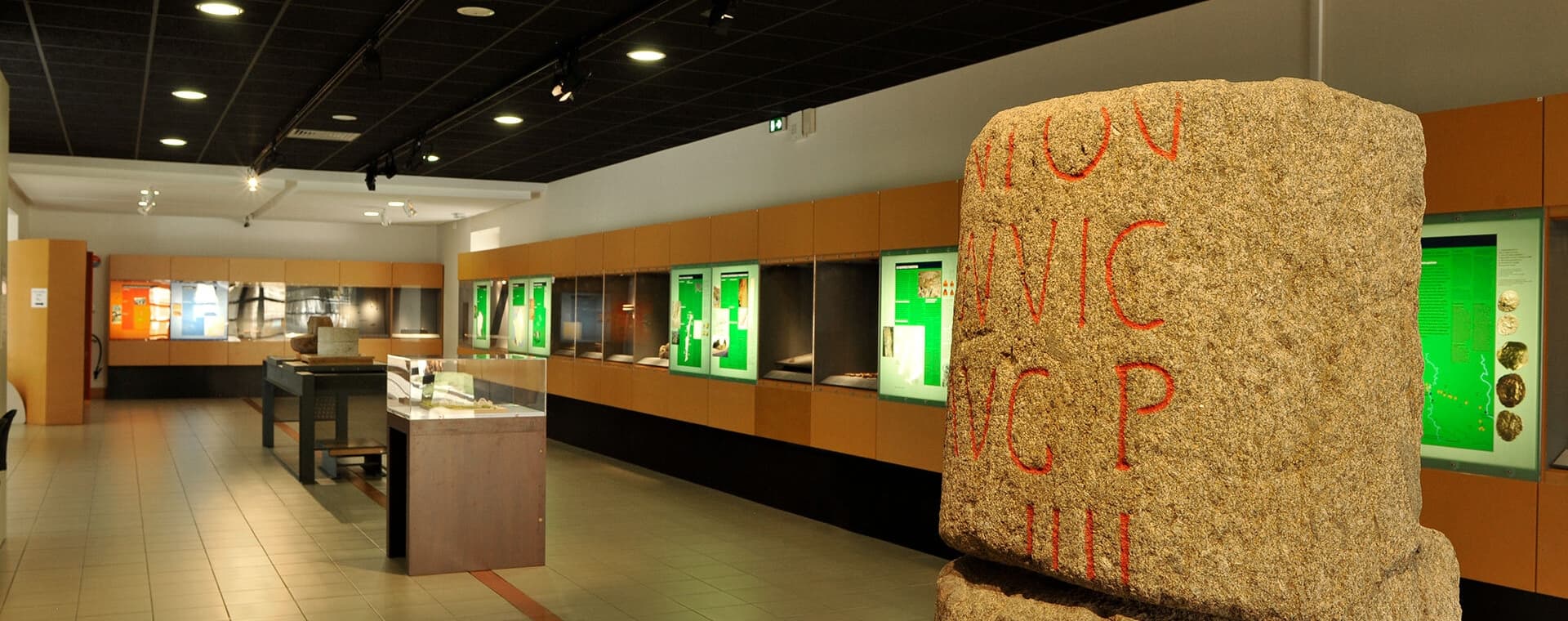
DISCOVER THE COLLECTIONS
The departmental museum of Jublains takes the visitor on a journey of discovery of the archaeological collections of the Mayenne, from the Bronze Age to the High Middle Ages (2,200 BC – 900 AD), with particular emphasis on the Gallic and Roman periods. Located as close as possible to the archaeological site of Noviodunum, the museum links the objects on display with the remains of the ancient city, the former capital of the territory.
The collections are made up of both objects from ancient archaeological excavations and recent discoveries, linked to ongoing research on the site of Jublains and in the department.
BONZE AGE
The end of prehistory is marked by social and technical changes linked to the exploitation of metal, its mastery and use. First of all, copper was used, then bronze (an alloy of copper and tin). This is the beginning of the Bronze Age (2200 – 800 B.C.). For the beginning of the period, the Mayenne region provides very few archaeological witnesses, but from the Middle Bronze Age (1600 – 1300 BC), traces of occupation multiply: metallic deposits on land and in humid environments, funerary and domestic spaces.
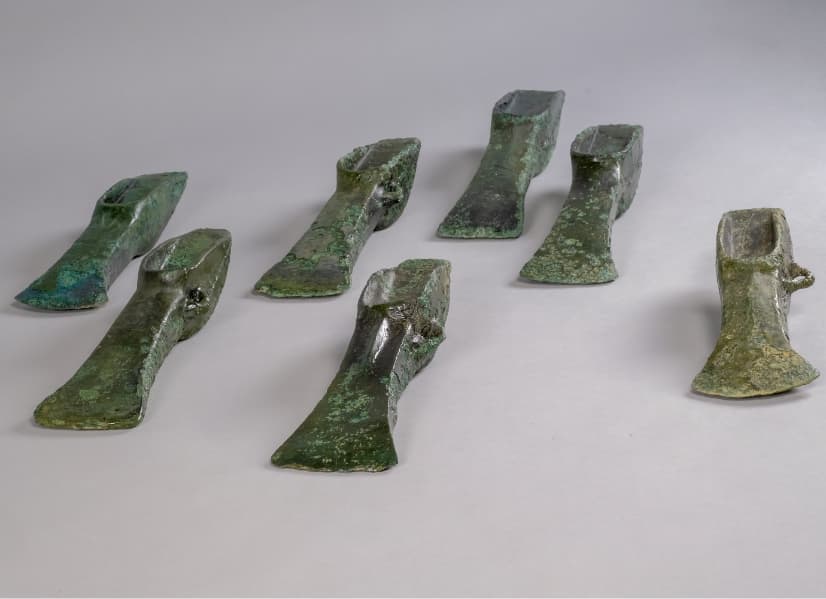
The dépôt de Bais
These 14 axes and 6 bracelets, buried between 1450 and 1300 BC for an unknown reason, resurfaced in 2015 during clearing work at a private home. The owner donated them to the museum and the objects thus joined the collections in 2017, after study and restoration.
Middle Bronze Age, incidental discovery
Bais, 2015, M. Decorte donation.
Image credit: D.Vernier
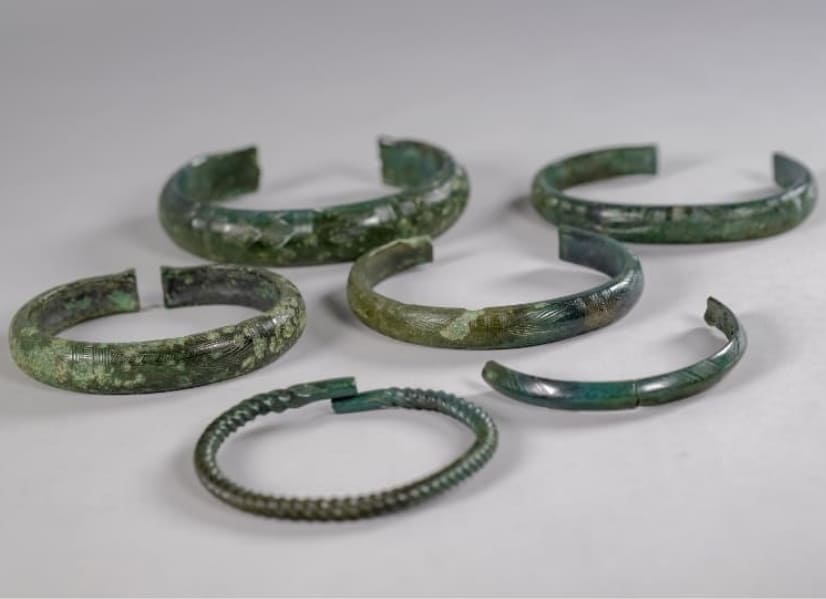
The dépôt de Bais
These 14 axes and 6 bracelets, buried between 1450 and 1300 BC for an unknown reason, resurfaced in 2015 during clearing work at a private home. The owner donated them to the museum and the objects thus joined the collections in 2017, after study and restoration.
Middle Bronze Age, incidental discovery
Bais, 2015, M. Decorte donation.
Image credit: D.Vernier
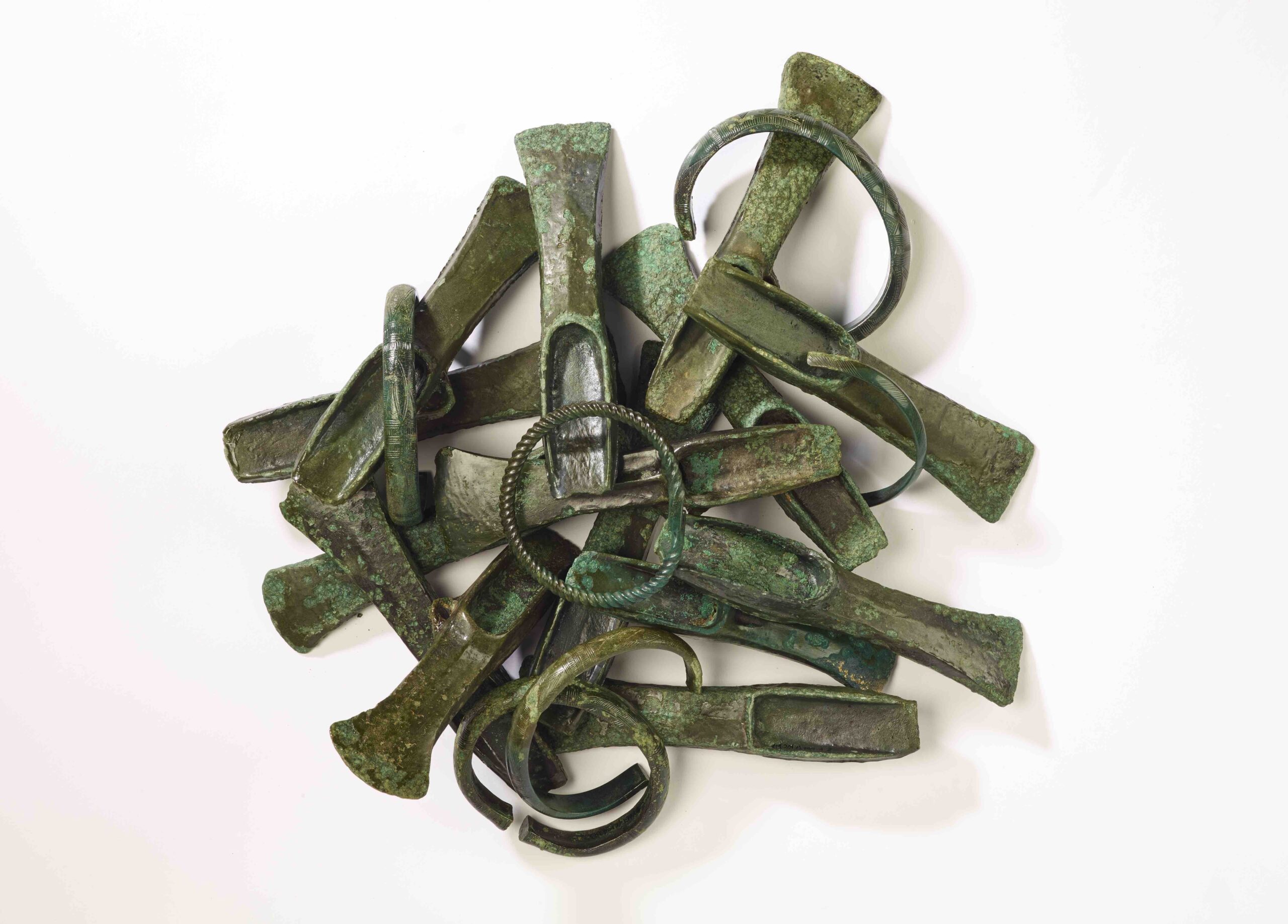
The dépôt de Bais
These 14 axes and 6 bracelets, buried between 1450 and 1300 BC for an unknown reason, resurfaced in 2015 during clearing work at a private home. The owner donated them to the museum and the objects thus joined the collections in 2017, after study and restoration.
Middle Bronze Age, incidental discovery
Bais, 2015, M. Decorte donation.
Image credit: D.Vernier
IRON AGE
The use of iron developed in Europe around 800 BC: the metal gave its name to this new period, also called the Gallic period in our regions. From the 2nd century B.C. onwards, cities developed. On the territory of the Diablintes, two enclosed towns, called oppida, appeared: one of 135 hectares at Moulay and the other of 55 hectares at Entrammes. At the same time, an open agglomeration was established at Jublains, near a sanctuary whose existence dates back to the 4th century BC.
Quarter stater of the diablintes
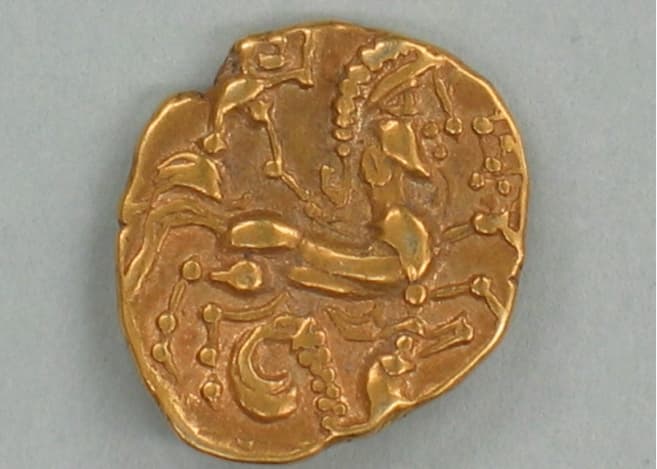
On Gallic coins, the figures represented – heads in profile, chariots pulled by horses with human heads – remain enigmatic. They refer to a largely forgotten mythology. A type of gold coin characterized by the presence of a seahorse is found among the Diablintes.
Gallic Period incidental discovery
Brecé, 1999.
Image credit: Prisma-Laval.
Iron weaponry
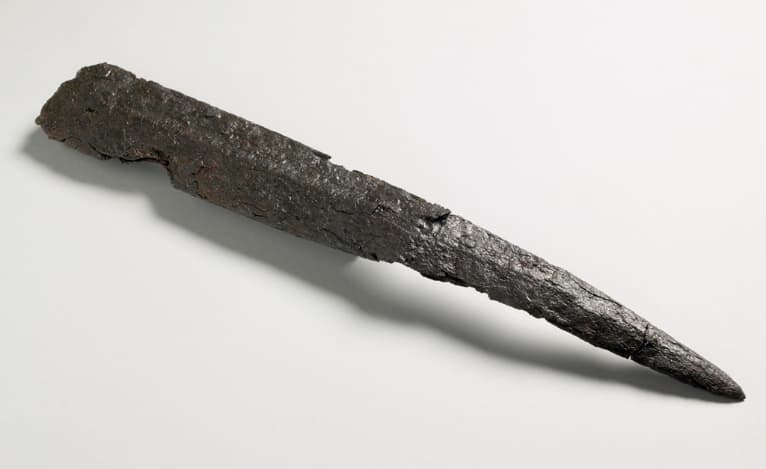
A batch of sword blades, javelin points and spear points was brought to light during the excavations of the Roman monumental sanctuary of Jublains. It supports the hypothesis of the existence of a Gallic place of worship, of the Diablintes tribe, dating back to the 4th or 3rd century BC.
4th – 3rd century BC Sanctuary of Jublains, excavation by J. Naveau, 1986.
Image credit: Prisma-Laval.
ANTIQUITY
In the second half of the 1st century A.D., the town established at Jublains became Noviodunum, the capital of the Diablintes territory. It was then endowed with a geometrical plan which extended over approximately 25 hectares. The main public buildings, characteristic of a Roman town, were gradually built along a north-south axis: the monumental sanctuary, the forum, the baths (public baths) and the theater. Excavations have also allowed us to identify an important artisanal activity in Noviodunum, as well as a variety of habitats.
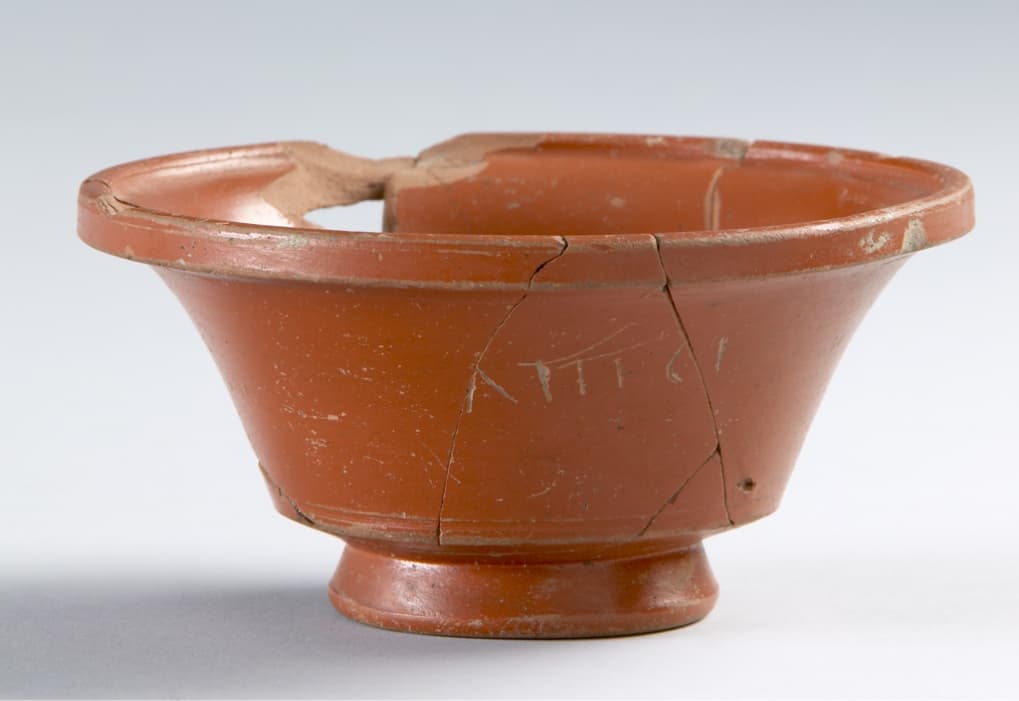
Cup in sigillated pottery
The sigillated ceramic owes its name to the potters’ marks, printed with a seal (sigillum). This cup bears the inscription “ATTICI”, which means “to Atticus”. Engraved awkwardly, this name is that of the owner of the object, an inhabitant of Noviodunum. A touching testimony of the past!
1st – 3rd century AD
Jublains, deposit of the city of Mayenne.
Image credit: Prisma-Laval.
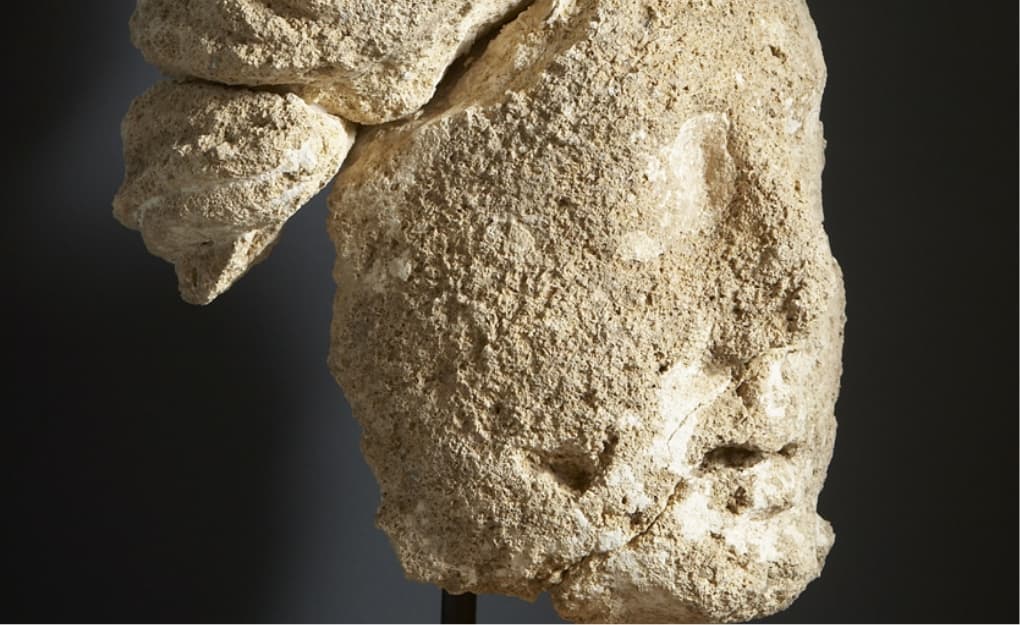
Head of a female statue
The two fragments make it possible to reconstitute the head of a statue. Discovered during the excavations of the Noviodunum sanctuary, they could correspond to the cult statue of the deity honored in the temple.
1st century AD
Sanctuary of Jublains, excavation by J. Naveau, 1990
Image credit: Prisma-Laval.
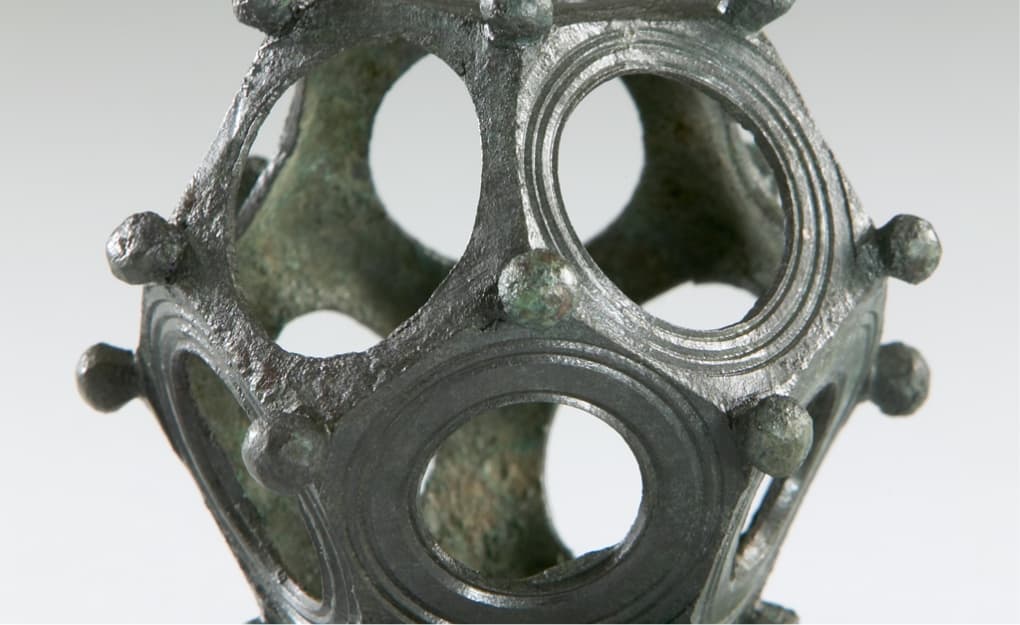
Bronze Dodecahedron
Several explanations have been proposed for this enigmatic and very rare object: head of a commanding staff, weapon mace, measuring instrument, game or even a dice used for divinations…
Early 3rd century AD
Jublains, new town hall, excavations by G. Guillier, 1995
Image credit: Prisma-Laval.
Early MIDDLE AGES
The beginning of the Middle Ages was a period of profound changes. Christianity led to the construction of churches, around which vast necropolises developed. In the town of Jublains, the primitive church used the walls of the ancient baths for its foundations. Funeral practices evolved: the deceased were no longer cremated but buried, often in stone sarcophagi, and accompanied by everyday objects (ceramics, weapons, jewelry, earrings).
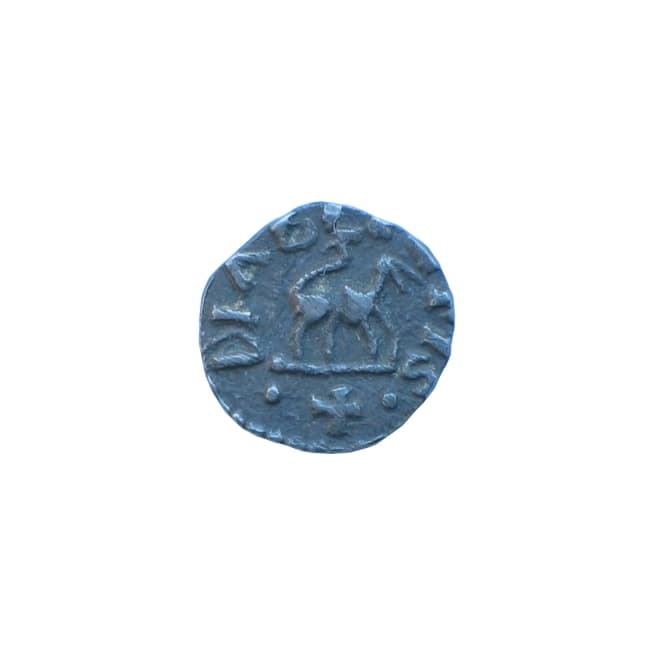
Merovingian silver denarius
This coin was minted in Jublains and bears the legend DIABLINTIS. The name refers to that of the Diablintes, a people who occupied two thirds of the territory of the Mayenne and the south of the Orne in Gallic times. In the Middle Ages, the term was used to designate the city that succeeded the ancient Noviodunum.
650 – 700 AD. Unknown provenance.